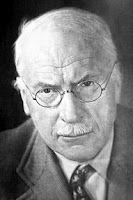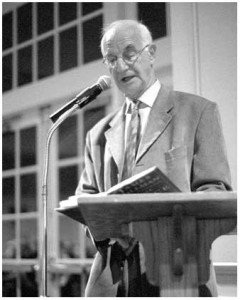Each doctor, each vegetal que enseña, each species of teaching plant has what mestizo shamans call a madre, mother, or genio, genius, or espíritu, spirit, or imán, magnet, or matriz, matrix. Informally, we generally translate all these terms simply as the spirit of the plant. In addition, mestizo shamans have a wide variety of protective birds and animals and plants, which we call, too, something like protective spirits. Yet, as Graham Harvey points out, those who are willing to argue endlessly about the meaning and applicability of the term shaman often refer to spirits as if everyone knows what the word means — as if, he says, “the word were self-evidently universally understood, and the beings universally experienced.”
So: what do we know about these spirits?
In many ways, they act very much like imaginary objects. First, spirits lack the sensory coherence of real things. That is, primarily, spirits cannot be touched, unlike real things, although they can often be heard and occasionally be smelled; although, in fairness, perhaps I should add that I have felt spirits — for example, rubbing my head — but never been able to touch them. Second, spirits are, unlike real things, not public, in that other people, in the same place at the same time, do not see the same spirit objects or persons I see. This point can be disputed by claims to the contrary, or by a claim that shamans, at least, can perceive the ayahuasca visions of others; but, as far as I know, these claims have not been well tested. Third, the behavior of spirits is unusual; spirits appear and disappear suddenly and unpredictably, fade away gradually, and transform themselves in ways inconsistent with the generally recognized behavior of real things. Fourth, the appearance of spirits may be significantly different from that of real objects and people. For example, the spirit of the ayahuma tree often appears as a person without a head, contrary to the normal appearance of real people, at least living ones. And the spirit of a particular plant may appear in an entirely different form at different times— for example, as male or female, old or young, with one or several heads — unlike real objects and people, who are generally fairly consistent in appearance from meeting to meeting.
On the other hand, spirits appear to have many of the qualities of persons — self-awareness, understanding, personal identity, volition, speech, memory. They are autonomous; they come and go as they wish; they may unilaterally initiate or terminate a relationship with a human. They can provide information or insight that the recipient finds surprising or previously unknown. They may have relatively consistent personalities — helpful, harmful, callous, malicious, indifferent, or tricky. Relationships with spirits may be demanding, dangerous, and exhausting, just as with humans.
Anthropologists have often expressed their puzzlement at this combination of attributes by asking dichotomously whether the spirits spoken of by their indigenous informants — and sometimes experienced by the anthropologists themselves — are or are not real.
The classic anthropological answer is no. Nineteenth-century anthropologist Edward Tylor coined he term animism to define the essence of religion as “the belief in spirits” — that is, as a category mistake made by young children and primitives who project life onto inanimate objects, at least until they reach a more advanced stage of development. Anthropologist Michael Winkelman, who has done research on shamanism and psychedelic medicine, similarly considers spirits to be simply a “metaphoric symbolic attribution” — that is, the incorrect attribution of “mind qualities like those of humans to unknown and natural phenomena … exemplified in anthropomorphic attribution of humanlike ‘mind’ characteristics to gods, spirits, and nonhuman entities, particularly animals.”
However, a number of contemporary anthropologists now contend that the answer is yes. Richard Shweder proposes that we “start with the assumption that malevolent ancestral spirits do exist and can get into one’s body, that they are experienced, and that the cultural representation of their existence and person’s experience of their existence lights up an aspect of reality that has import for the management of the self.” Jenny Blain, who is both an anthropologist and herself a neoshamanist seiðworker, protests against turning spirits into “culturally defined aspects of one’s own personality, not external agents.” Such reductionism is, she says, “part of the individualization and psychologizing of perception that pervades Western academic discourses of the rational, unitary self.” Anthropologist Felicitas Goodman maintains that spirits are real beings who seek communication with humans. “Ritual,” she says, “is the rainbow bridge over which we can call on the Spirits and the Spirits cross over from their world into ours.” Edith Turner is a prolific advocate for the simple reality of spirits: “I saw with my own eyes a large gray blob of something like plasma emerge from the sick woman’s back. Then I knew the Africans were right. There is spirit stuff. There is spirit affliction: it isn’t a matter of metaphor and symbol, or even psychology.”
 |
| Carl Jung |
But the experience of spirits as autonomous personalities — what Terence McKenna has called alien intelligences or organized entelechies — ought to be taken as subverting this naïve dichotomous ontology. Indeed, so should any metachoric experience — hallucinations, lucid dreams, out-of-body experiences, active imagination, eidetic visualization. We have already discussed metachoric experiences and their common features — their presentness, detail, externality, and three-dimensional spacefulness. To this we may now add one more — that, in any metachoric experience, one may be confronted by autonomous others.
Indeed, Carl Jung’s description of the other-than-human persons encountered in active imagination is strikingly similar to the shaman’s experience of encountering the plant and animal spirits. These beings, Jung says, know things and possess insights unknown to the person encountering them; they “can say things that I do not know and do not intend.” The encounter is a dialogue — a conversation between me and something else that is not-me — “exactly as if a dialogue were taking place between two human beings.” These persons possess autonomy, independent knowledge, the ability to form relationships — “like animals in the forest,” says Jung, “or people in a room, or birds in the air.” They “have a life of their own.”
 |
| James Hillman |
Psychologist James Hillman says that this “living being other than myself … becomes a psychopompos, a guide with a soul having its own inherent limitation and necessity.” When we actively confront these other-than-human persons, respond to them with our own objections, awe, and arguments, then, as Ann and Barry Ulanov put it, we “come to the breath-stopping realization of just how independent of our conscious control such images are. They have a life of their own. They push at us. They talk back.” They are, says Hillman, “valid psychological subjects with wills and feelings like ours but not reducible to ours.”
The naïve dichotomous metaphysics takes as normative a particular set of experiences characterized by sensory coherence, predictability, and consistency. Experiences that are not normative by these criteria are either dismissed as mistakes or else normalized, reified, turned into stuff, into — as Richard Robinson used to put it — gaseous fauna.
James Hillman takes a very different approach. He does not reify the imaginal; rather, he mythologizes reality. He calls this soul-making. The act of soul-making is imagining, the crafting of images:
Soul-making is also described as imaging, that is, seeing or hearing by means of an imagining which sees through an event to its image. Imaging means releasing events from their literal understanding into a mythical appreciation. Soul-making, in this sense, is equated with de-literalizing — that psychological attitude which suspiciously disallows the naïve and given level of events in order to search out their shadowy, metaphorical significances for soul.
The human adventure, Hillman says, “is a wandering through the vale of the world for the sake of making soul.” And what is soul? “Soul is imagination,” he says, “a cavernous treasury … a confusion and richness, both … The cooking vessel of the soul takes in everything, everything can become soul; and by taking into its imagination any and all events, psychic space grows.” And soul is “the imaginative possibility in our natures, the experiencing through reflective speculation, dream, image, and fantasy — that mode which recognizes all realities as primarily symbolic or metaphorical.” The question of soul-making is this: “What does this event, this thing, this moment move in my soul?”
Hillman calls this seeing through — the ability of the imagination’s eye to see through the literal to the metaphorical. Re-visioning is deliteralizing or metaphorizing reality. The purpose is to make the literal metaphorical, to make the real imaginal. The objective is to enable the realization that reality is imagination— that what appears most real is in fact an image with potentially profound metaphorical implications. Thus, says Hillman, soul is “the imaginative possibility in our natures … the mode which recognizes all realities as primarily symbolic or metaphorical.” “By means of the archetypal image,” he writes, “natural phenomena present faces that speak to the imagining soul rather than only conceal hidden laws and probabilities and manifest their objectification.”
So Hillman speaks of personifying not as a category mistake but rather as a “basic psychological activity — the spontaneous experiencing, envisioning and speaking of the configurations of existence as psychic presences,” as a mode of thought “which takes an inside event and puts it outside, at the same time making this content alive, personal, and even divine.” Personifying is “a way of being in the world and experiencing the world as a psychological field, where persons are given with events, so that events are experiences which touch us, move us, appeal to us — a way of imagining things into souls.” If Hillman’s personifying, seeing through, soulmaking becomes a way of engaging with the world, a relational epistemology, then it is verging upon a genuine and nonreductive animism, one in which the world has become magical, filled with wonders, filled with the spirits.

- Previous Post: Protective Spirits
- Next Post: The Hallucinogen Culture Area
- More Articles Related to: Sacred Plants, Shamanism


